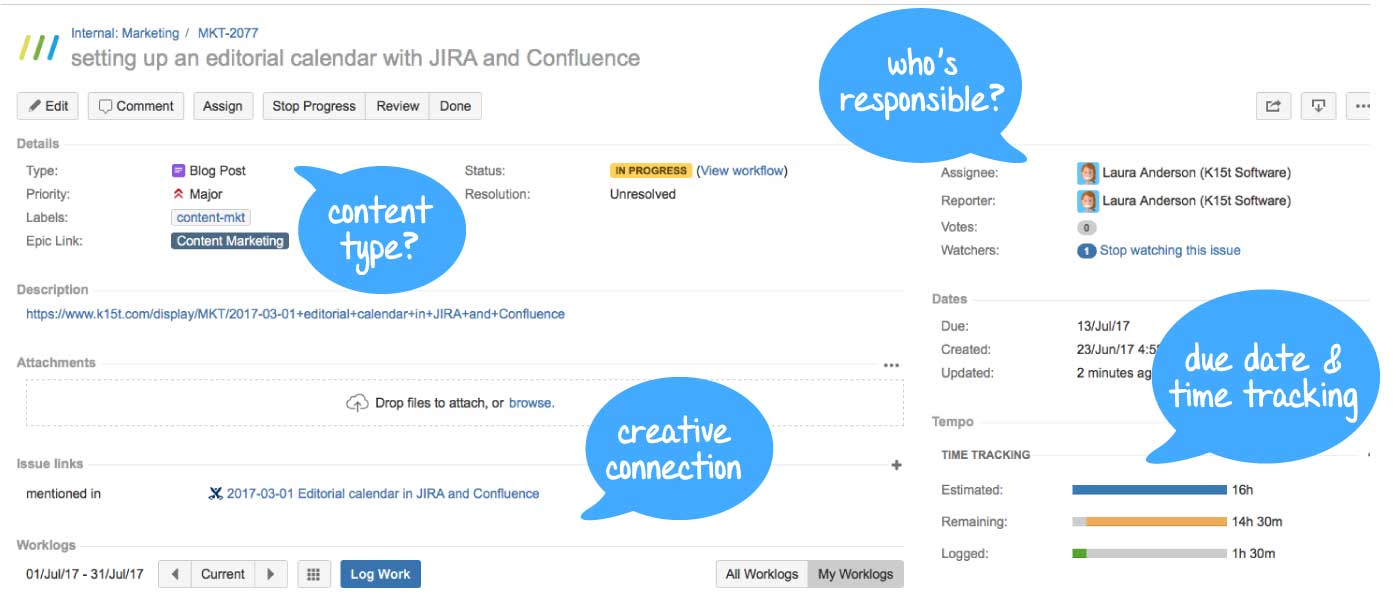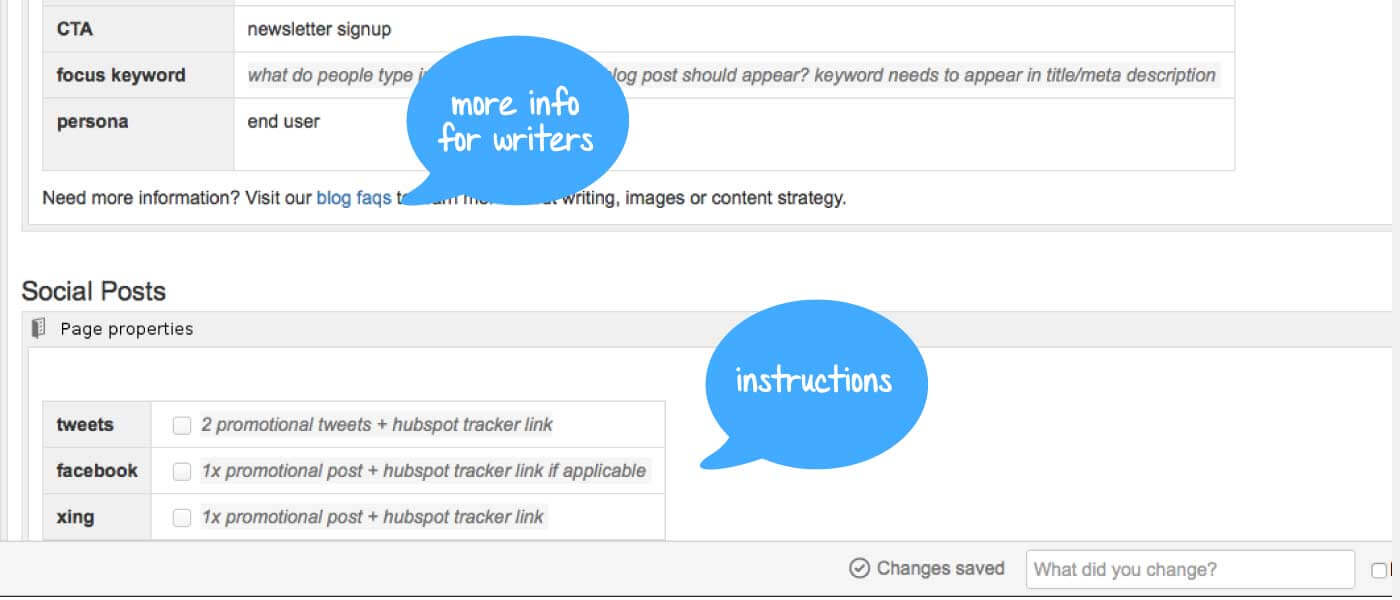Managing Your Editorial Calendar With JIRA and Confluence
Anyone working with content creation and publication needs some form of an editorial calendar – a way to track what content is being created, where it will be distributed, who's responsible and when all of it is due. Editorial calendars can come in many shapes and sizes, e.g. Trello boards, an excel sheet or proprietary software. Here at K15t Software, we use JIRA and Confluence to manage the inner and outer workings of our content creation efforts, and for good reason.
Synergetic tools to cover creation and analytics
When one surveys the landscape of editorial calendars, it's immediately clear that most reflect the analytic parameters only (due date, distribution channels, allocated time, etc.). Now you may think " that's exactly what I want from an editorial calendar – to know what, when, where, and how much content was published". Ideally, your editorial calendar should give you more than just statistics.

As the the title of this post suggests, there are two aspects of an editorial calendar: the analytic, and also the creative. The analytic part deals with scheduling, time tracking, and distribution statistics among other things. The creative references anything that is involved in the creation and production of content, from blog copy to LinkedIn posts and Instagram pics. The two parts are inherently linked, one shouldn't exist without the other.
Using tools which are meant to work in unison makes every content creator's job easier by avoiding the need to switch between tools with completely different use habits. When everything is contained in one place, there is no more searching through folder structures and long lists of file names in order to find that one draft that is due tomorrow.
An editorial calendar which only provides tracking parameters isn't much use if it doesn't also lead to the actual content. And a content hub which doesn't provide access to scheduling information also doesn't make much sense ("Tell me again when you want this done?") This is why we use a combination of JIRA and Confluence to manage our blog content. JIRA for the analytic part and Confluence for the creative.
Using JIRA for content scheduling
On the analytic side of our editorial calendar, we use JIRA Software. It gives us the features we need to
schedule content for publication
track time spent on content creation
assign various kinds of content (email, blogs, social posts) to different people
report on distribution statistics or topic frequency
stay on top of content status and next steps
Here are a couple of screenshots which show you the components of our custom editorial calendar dashboard in JIRA.

It gives us a visual overview of scheduled content for each month, and reports on which blog topics we are writing about most, if a blog post is being reviewed or drafted, and who's responsible for each.
To connect the analytic part with the creative in Confluence we use JIRA's issue links feature which automatically adds Confluence pages on which that particular issue is mentioned (we'll get to that in the next section).

Using Confluence for content creation
For the creative part of our editorial calendar, we use Confluence. It allows us to
draft
version
discuss (inline and global comments)
collaborate (@-mentions)
proof-read blog as well as social content
Furthermore, because Confluence acts as a single source of truth, blog pages can also contain links to how-to guides and instructional text which help the content creator.
Providing your content contributors with useful tips and instructions is a very good idea. Page templates are the way to go in this case. Fortunately, we figured out how to easily apply templates to blog posts in Confluence.

As we can manage all of our blog posts in Confluence, we also add all social posts that promote said blog to the content page. This gives us another level of overview when it comes to keeping track of how a blog was promoted (including tracked links).

By adding the corresponding JIRA issue, you can also see what the status is, who is responsible, and when it's due.
Using Confluence to create and manage all content creation also allows us to take advantage of all available Confluence add-ons. This allows us to hyperlink visual content on-page, create images, add videos, and make property reports (without leaving the tool).
What do you think?
Of course, there are many other tools out there to choose from. I'd be interested to hear which tools do you use for your editorial calendar and why. Do they integrate the creative with the analytic or do you separate these completely? Let me know in the comments below.

.png)